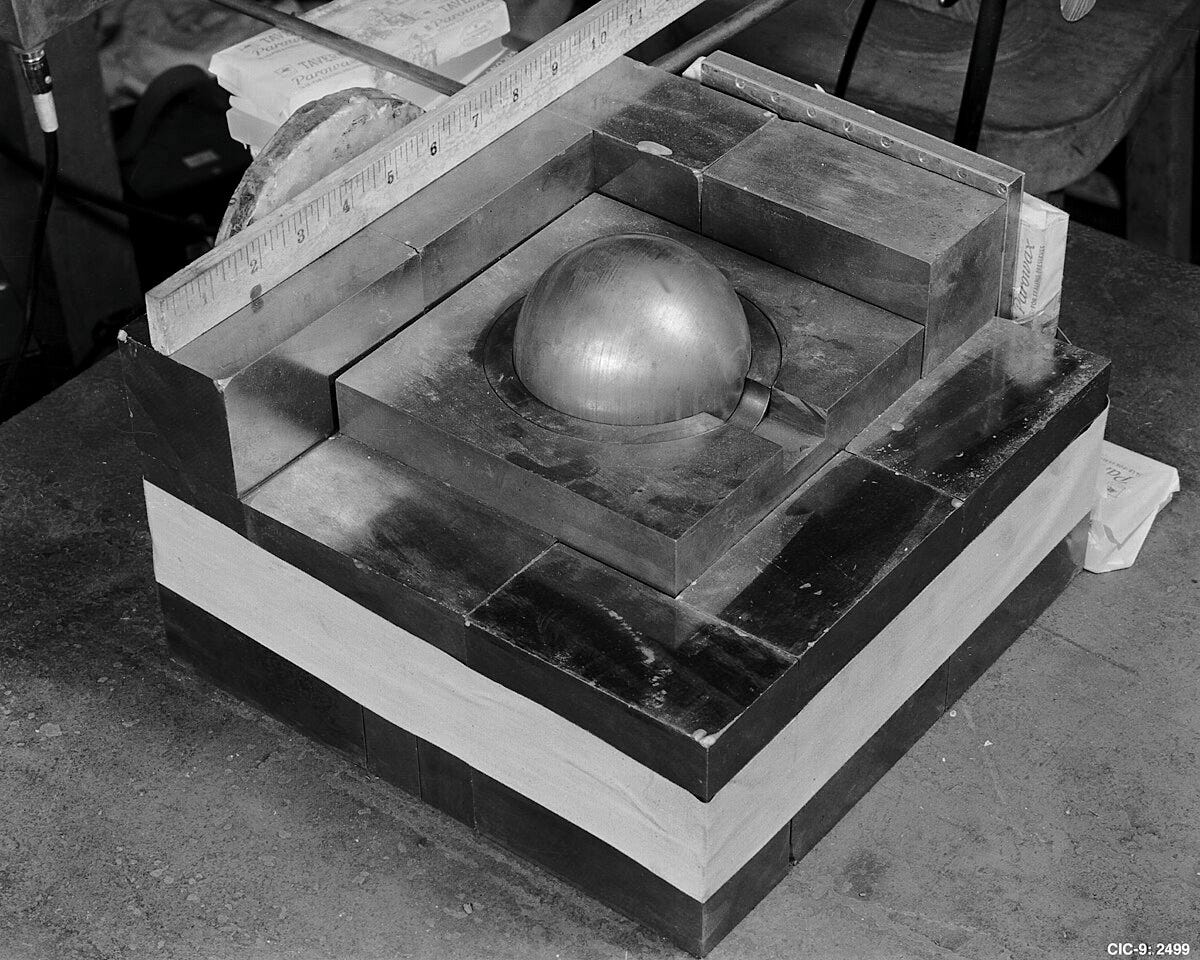The Demon Core: The Radioactive Heart That Started as a Weapon and Ended as an Executioner
The room glowed blue for less than a second. On May 21, 1946, physicist Louis Slotin stood in a Los Alamos laboratory, a screwdriver in his hand and a sphere of plutonium on the table. Seven men watched as he nudged two beryllium hemispheres around the core, pushing it toward criticality. Then, the screwdriver slipped.
A surge of invisible neutrons tore through the air. The plutonium—nicknamed the “Demon Core”—had just unleashed enough radiation to kill a man. Slotin’s reflexes saved the others, but his body began to rot from the inside. Nine days later, he was dead.
This is not a story of war. It’s a story of hubris. The Demon Core was built to destroy cities, but instead, it destroyed two scientists. It’s a warning about what happens when humans play god with forces they can’t control.
Birth of a Demon: The Manhattan Project’s Unused Weapon
The Demon Core was born from desperation. By 1945, the Manhattan Project had already created two atomic bombs: “Little Boy” and “Fat Man.” A third bomb was in development, its heart a 6.2-kilogram sphere of plutonium-239. But on August 15, Japan surrendered. The war ended, and the core became obsolete.
Instead of dismantling it, scientists at Los Alamos repurposed it for experiments. They called it “Rufus” at first—a joke. But plutonium is no laughing matter. A synthetic element forged in reactors, it emits alpha particles that shred DNA. Even a speck can kill.
Post-war ambition blinded the researchers. With the urgency of combat gone, they grew reckless. Criticality tests—measuring the exact mass needed for a nuclear chain reaction—became routine. They called it “tickling the dragon’s tail.” But dragons bite.




